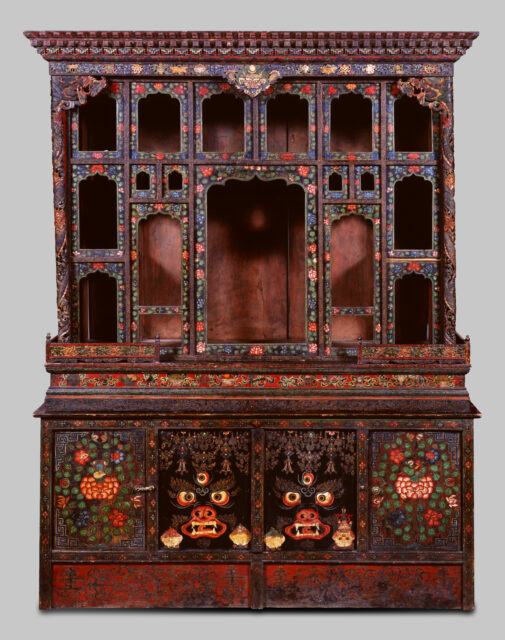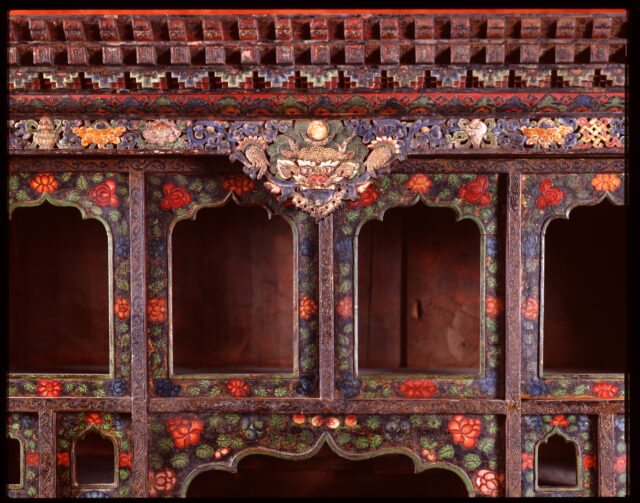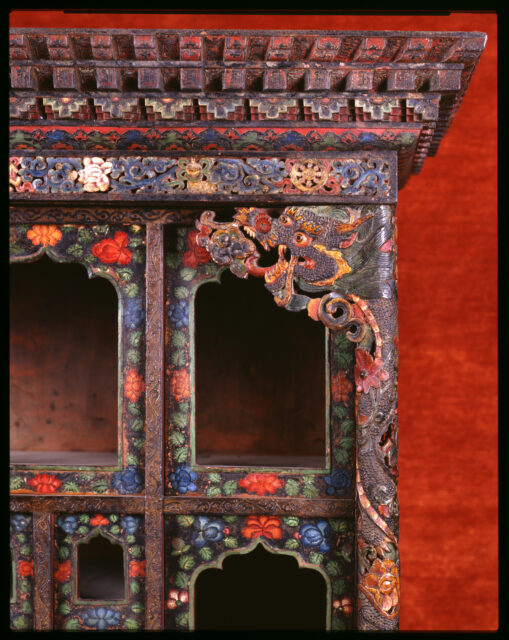Shrine Cabinet (chosham)
- Location
- Tibet
- Date
- second half of 20th century
- Material
- Wood, mineral pigments
- Catalog Number
- SC2021.2.1a-cc
- Collection
- Rubin Museum of Art
- Provenance
- Gift of Kingdoms Unlimited



To present statues in a private place of worship, Tibetan Buddhists create special cabinets called dharma displays (chosham). They can be simple or elaborately carved and painted, as in this example. This chosham has many niches framed by decorative painted foliage. The upper part, or crown, is carved with the dragon face in the center and auspicious symbols. The two outer columns are intricately carved dragons, whose sinuous bodies are entwined with flowers. The top cabinet’s lower frontal section, or veranda, is etched with flowers and clouds.
The top niches accommodate the Buddha’s teachings, or Tibetan books known as pecha, which are traditionally wrapped in cloth when stored. The lower niches house sculptures of deities the family worships, including Padmasambhava and his manifestations (center), Amitayus (top left), Avalokiteshvara (lower left), White Tara (lower right), and Ushnishavijaya (top right). Butter lamps serve as symbolic offerings of light as well as means of illumination. A family would gather by this display during rituals or special occasions, as well as make daily offerings, including incense, food, and even money.